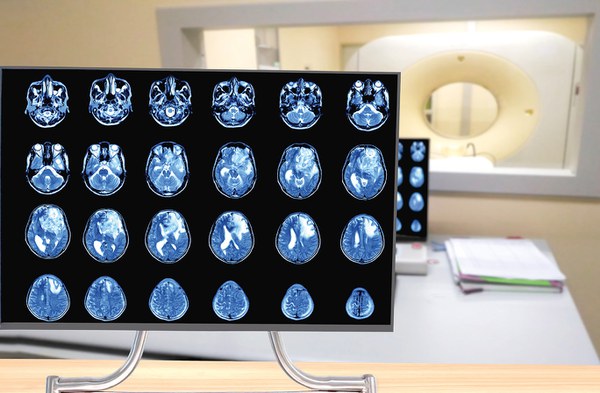Go to Online-effzett for the latest topics and background information
When cancer cells destroy themselves
A new RNA technology might enable brain tumours to be eliminated without harming healthy cells. In studies on mice, the technology caused glioblastoma cancer cells to destroy themselves. The same principle could be used to help fight viruses.

In cancer research, the goal has long been to develop drugs that only attack tumour cells and do not cause any side effects in healthy cells. The active ingredients must therefore be able to distinguish between healthy and diseased cells. However, it is often impossible to tell from the outside whether a cell is cancerous or healthy. Only the inside of the cell clearly shows whether it is a tumour cell. To examine the inside of cells, scientists at Jülich have developed a complex molecule. It is not only able to recognize diseased cells, but also cause them to produce a lethal substance and thus destroy themselves.
To do so, the researchers rely on messenger RNA (mRNA). This biomolecule has become well known since the development of vaccines against COVID-19. In cells, mRNA is responsible for reading the genetic information of DNA and using this blueprint to initiate the production of various proteins for cell metabolism.

The Jülich team has developed this principle further into what is known as selectively expressed RNA (seRNA). seRNA can penetrate all cells, but unlike mRNA, it only becomes active in certain cells. “We can determine which cells these are in advance. seRNA is composed of different modules. Depending on the choice of module, it can be determined in which target cell of the body the seRNA is activated and which medically effective molecule is produced,” explains Privatdozent Bernd Hoffmann from the Institute of Biological Information Processing (IBI-2).
The procedure is always the same – one module acts as a sensor. It recognizes whether it is dealing with a healthy cell or a diseased cell, such as a glioblastoma cancer cell. To do this, the module acting as a sensor reads the cell’s mRNA. If it finds a section that is characteristic of a cancer cell – known as a tumour marker – it activates the self-destruction process. The cell destroys itself in several steps (see infographic). In healthy cells, however, nothing happens. “They do not have the tumour markers, so the mechanism is not activated,” says Hoffmann. Side effects are therefore avoided. And if the seRNA remains inactive in the body, it is broken down by natural processes without leaving any residue after a few hours.
Flexible application

“Using the cell’s own RNA as a switch is completely new,” says Hoffmann, who developed the corresponding RNA molecule with his colleagues and then characterized it in detail in terms of its underlying function together with partners from Cologne, Würzburg, and Strasbourg. Hoffmann has patented the idea for the technology and founded the start-up SRTD biotech with colleagues. He sees great potential in the method: “The modular principle makes seRNA a promising platform technology,” stresses Hoffmann.
Prof. Rudolf Merkel, director at IBI-2, agrees: “With the development of seRNA molecules for medical applications, we can ensure that diseased cells are targeted and combine this with the selective production of active substances.” The new method might therefore be used not only for various types of cancer, but also for viral diseases such as hepatitis B and autoimmune diseases.
IBI-2 will continue to develop the switchable seRNA molecule technology on behalf of SRTD biotech, optimizing it for use against glioblastoma and other diseases. Following successful studies in mice with glioblastoma, the new platform technology will now also undergo pre-clinical trials and initial toxicological studies to fight liver cancer.
Currently no cure
Glioblastoma is a malignant tumour that can develop in any part of the brain. There is currently no cure. The cause of glioblastoma is still unclear. The tumour usually develops within a short period of time. In its later stages, it is shaped like a butterfly, which is why the tumour is also known as a “butterfly glioma”. It usually affects people in middle age. Their survival time varies between a few months and several years.
Video: A new chapter in the treatment of diseases.
This text is taken from the 1/25 issue of effzett. Text: Barbara Schunk/Christian Hohlfeld; Images: Shutterstock.com: April stock, Forschungszentrum Jülich/Sascha Kreklau,Seitenplan




